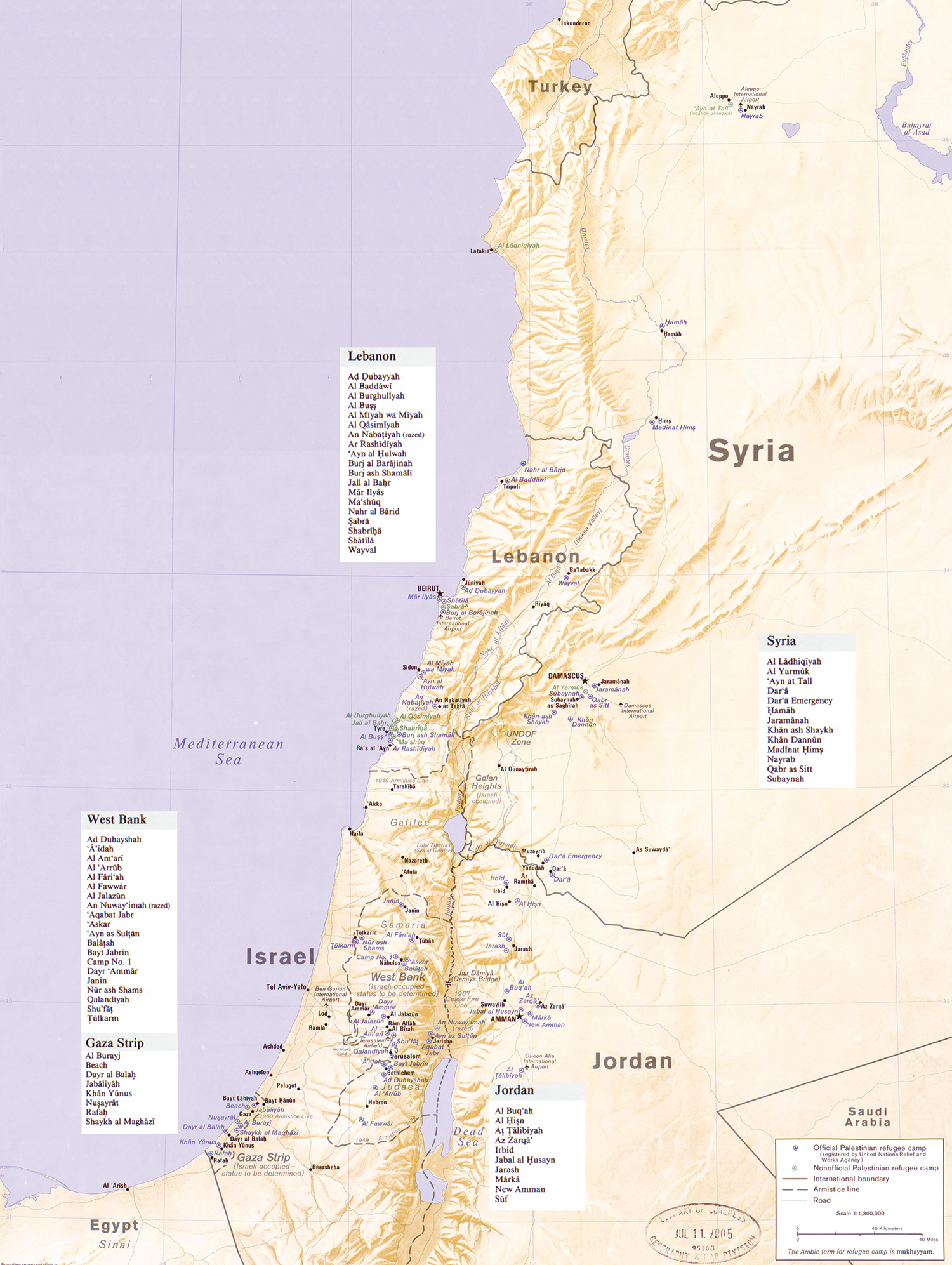In 1948, about 750,000 Palestinians who had lived in what became the state of Israel were forced to abandon their homes and became refugees. The United Nations Relief and Works Agency (UNRWA) defines a refugee as a person “whose normal place of residence was Palestine during the period 1 June 1946 to 15 May 1948, and who lost both home and means of livelihood as a result of the 1948 conflict.” UNRWA’s definition also covering the descendants of refugee males, in 2013 the number of registered Palestine refugees amounted to 5 million. Fifty-eight camps are recognized by UNRWA in Jordan, Lebanon, Syria, and the occupied Palestinian territories. UNRWA provides services to a camp and maintains schools, health centers, and distribution centers, but it does not itself run any camps and has no police powers or administrative role, as this is the responsibility of the host countries, responsibilities being covered by official agreements between the host country and UNRWA. Designated refugee camps, which developed from tented cities to rows of concrete blockhouses, to urban ghettos indistinguishable from their surroundings, house around one third of all registered Palestine refugees. UNRWA also provides services in areas where registered refugees live outside of recognized camps, such as Yarmouk near Damaskus. Refugees do not own, but are allowed to use the land in the camps, and conditions are generally “poor, with high population density, cramped living conditions, and inadequate basic infrastructure such as roads and sewers.”i Resolution 194 of the United Nations General Assembly grants Palestinians the right to return to their homeland if they wish to “live at peace with their neighbors.”


